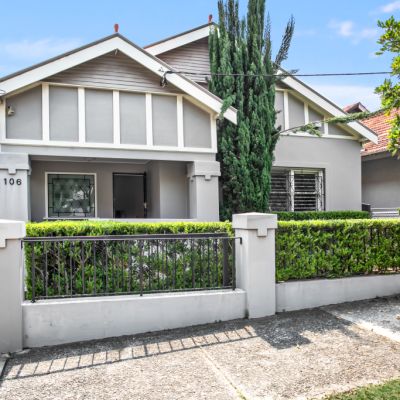Confused about refinancing? We've got your questions answered

Refinancing your home loan can help you find a better interest rate, consolidate your debts, and save on your repayments.
The decision to refinance depends on your circumstances and is usually based on the financial savings outweighing the effort and expenditure involved in obtaining them.
Here are the answers to six common questions surrounding refinancing that can help guide home owners on how to make that decision.
I just took out a home loan – how soon should I be refinancing?
Stephen Roberts and Benjamin Younan, senior home loan specialists at Domain Home Loans recommend considering refinancing every 12 months.
“Aussies should be refinancing their home loan every two to three years but, with the markets of today, having it reviewed every one to two years would not hurt either,” Younan says.
Roberts says if your original home loan was set up correctly and you are on a good deal, then his recommendation would be in a year. However, a good broker will follow up with their clients every six months.
“We make sure they’re on the right deal and, if they’re not, we have a team that will approach the existing bank and ask if they can sharpen the rate. Then, as a last resort, we refinance,” Roberts says.

What are the costs involved with refinancing?
There are several costs involved with refinancing, but these differ depending if your home loan has a fixed or variable rate. If you’re on a fixed rate home loan, you may need to pay an exit fee (more on exit fees in the next question).
All other fees vary, but generally start as low as $600 and reach as high as $1500.
“When we refinance with customers, we leave a surplus of around $1500 on top of the loan so this ensures all fees are covered and will take into consideration the interest accrued on the home loan before settlement,” Younan explains.
Your costs will be made up of fees from your outgoing bank, and fees from your incoming bank.
Discharge fees paid to your outgoing bank can vary but are normally around the $350 mark, according to Roberts. “Then when the incoming bank registers its mortgage with the land titles office, it will be registration of mortgage costs – so there will be some government costs that may amount to $300 to $500.”
Younan says these fees will depend on your lenders old and new as well as which state you’re in.
“Some lenders will also charge a valuation fee but most brokers are able to dismiss this fee, depending on the lender,” he adds.

What are exit fees and do I need to pay them?
Exit fees are paid on fixed rate home loans that you break before the term is complete. They are sometimes referred to as “break fees” but are different to the previously mentioned discharge fees.
“The loan amount, the time left on the fixed term, and that lender’s specific interest rate they are on – those three determine what the exit fee will be,” Younan says. “Lending specialists will usually give the customer an indication of what they’d be up for.”
“It can be substantial. In this environment, it’s not uncommon to have $10,000 or more break cost,” Roberts warns.
Will refinancing impact my credit score?
Rejected refinancing applications can negatively affect your credit score. However, using a mortgage broker to make inquiries on your behalf can help mitigate this.
“If in the refinancing process you apply to three or four different banks at the same time to see who is going to present the best deal, then that is going to have an effect on your credit file– because you’re doing multiple inquiries for the same type of lending at the same time,” Roberts says.
Younan says while credit scores are important, lenders all have different standards. For example, some lenders won’t take customers under a credit score of 500, some will, and some won’t even check. “Most important of all: strong payment history outweighs inquiries being made,” Younan says.
“Just like all inquiries, if you make too many of them in a small amount of time, this can begin to have a negative hit on your score. Assuming that bills and liabilities are always paid on time, and that there’s not too many unsecured and secured credit inquiries in the past five years, you won’t be having any issues.”
Will I have to pay Lenders Mortgage Insurance (LMI)?
You could avoid paying LMI if your loan to value ratio (LVR) is not higher than 80 per cent. However, each lender’s terms are different and whether you pay LMI again will depend on who you refinance with.
“The LVR is quite simply what is the amount of the loan as a percentage of the value of the property,” Roberts says. “If that remains at 80 per cent or less, then there will be no LMI. If it goes above 80 per cent by any amount, there will be some LMI. The greater that percentage becomes, the greater the LMI becomes.”
This does not mean that you cannot refinance with a LVR higher than 80 per cent but it will be another cost to evaluate.
“Refinancing over 80 per cent can be done with certain institutions but only if there’s a financial benefit. The more you borrow over 80 per cent, the more your LMI is going to be,” Younan says.
How long does it take to refinance?
On average, refinancing can take up to 30 days but depends largely on the bank’s processing times for applications. Some banks have a one-day assessment time, others take weeks.
“Each bank has different assessment times,” Younan says. “Your lending specialist will guide you on these times depending on the lender you proceed with. “
“These times constantly change. From submission to when the application settles, a general rule of thumb is anywhere between 20 and 30 days.”
We recommend
We thought you might like
States
Capital Cities
Capital Cities - Rentals
Popular Areas
Allhomes
More









